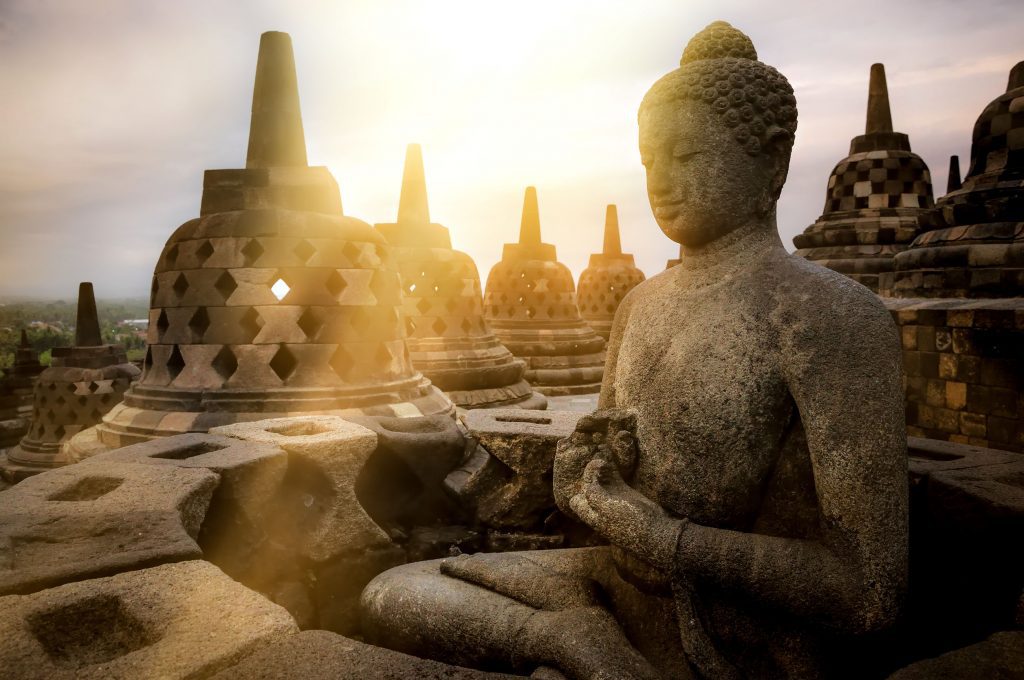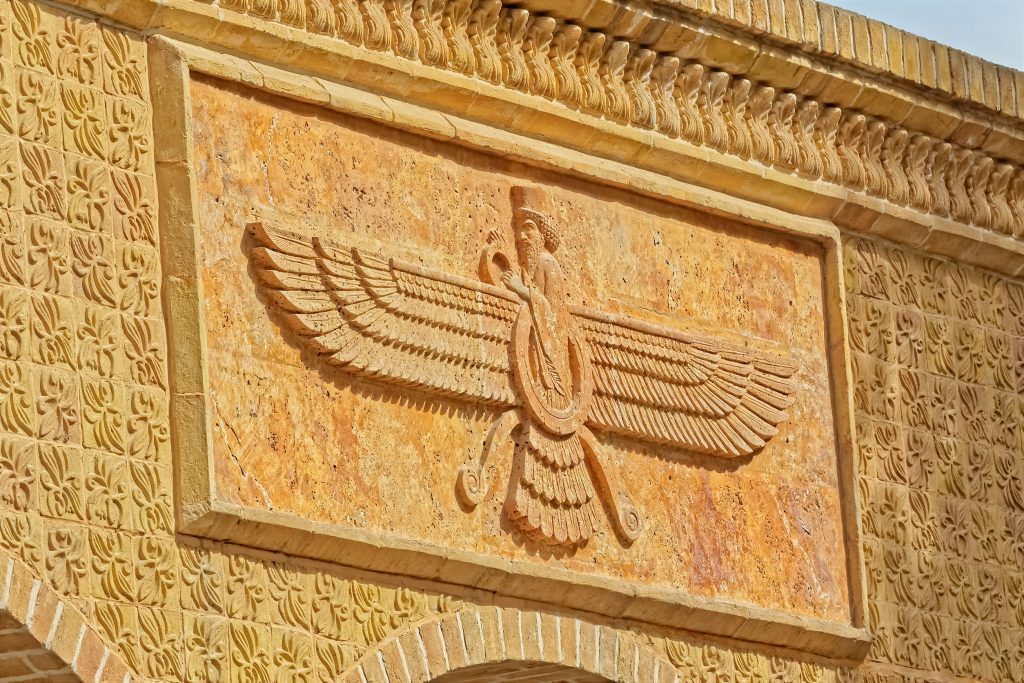The most popular religions in the world include Christianity and Islam. There are nearly 8 billion people around the world part of a certain religion and faith has shaped personal beliefs as well as entire societies from early history.
Countries, where almost all residents are part of a single religion, include the Vatican (Roman Catholic) and Afghanistan (Sunni and Shi’a Muslims).
Here are the biggest religions according to the number of worshipers.
Table of Contents
The Most Popular Religions in the World By Adherents
| Number | Religion | Adherents |
|---|---|---|
| 1 | Christianity | 2.382 billion |
| 2 | Islam | 1.907 billion |
| 3 | Hinduism | 1.161 billion |
| 4 | Buddhism | 506 million |
| 5 | Sikhism | 26 million |
| 6 | Jainism | 4.2 million |
| 7 | Cao Dai | 4.0 million |
| 8 | Zoroastrianism | 2.6 million |
| 9 | Tenrikyo | 2.0 million |
| 10 | Animism | 1.9 million |
1. Christianity: 2.382 billion

Christianity is a monotheistic religion influenced by Jesus, the Messiah, and the Son of God. Christianity is the world’s largest religion with around 2.4 billion followers.
The various forms of Christianity are influenced both by the East and by the West but most agree Jesus was the Son of God who was crucified and who then resurrected for mankind.
Christianity then moved on to influence much of the Western world. The first universities were created by the church in Europe. Parts of Christianity such as the Jesuits also made major contributions to early scientific discoveries.
Christians live by the scriptures which are known as the Bible and which are comprised of the Old Testament and the New Testament. These scriptures are recognized by all Christian denominations.
The most important theological aspects of the Bible have been discussed in Ecumenical Councils in Nicaea, Constantinople, Chalcedon, and Ephesus.
In 1054, the Christian Church split into the Catholic Church and the Orthodox Church, mainly due to issues relating to papal primacy.
Today, the Catholic Church is comprised of around 1.3 billion believers while the Orthodox Church is followed by 230 million Christians. Protestantism is followed by 920 million believers today.
2. Islam: 1.907 billion

Islam is the world’s second-largest religion after Christianity. There are now more than 1.8 million Muslims around the world where they form a majority in 49 countries.
Islam originated in the 7th century Arabian Peninsula. The religion grew exponentially in the 8th century with the Umayyad Caliphate (the second caliphate out of 4 caliphates after the death of prophet Mohamad).
Islam is a monotheistic Abrahamic religion. Mohammad is the messenger of God teaching about God as merciful and all-powerful.
Islam recognizes multiple prophets and it describes the religion as universal. Some of these Prophets include Adam, Abraham, Moses, and Jesus.
The teachings of Islam are found in the Quran, which is also believed to be the final scripture of the religion.
Muslims believe in a final judgment day when those who have lived a righteous life will be rewarded with paradise and where the unworthy will have to suffer in hell.
Life principles of Muslims include testimony, charity, fasting, prayer, and pilgrimage. Principles of jihad also influence the life of Muslims and they refer both to striving for perfection as well as to the military aspect of Islam.
3. Hinduism: 1.161 billion

Hinduism is one of the world’s oldest religions. There are more than 1.25 billion Hindus today and they share written beliefs of philosophy, mythology, rituals, and prayer.
Core Hinduism beliefs include Dharma that refers to living an ethical life.
The concepts of the continuous cycle of birth and death, as well as karma (the action and reaction principle), are found in Hinduism.
The concept of one and multiple Gods are present in Hinduism. Concepts of pantheism also define Hinduism and they refer to the similarity of reality with divinity.
4. Buddhism: 506 million

Buddhism has over 500 million followers and it encompasses a set of beliefs that are based on the teachings of Buddha. It originates in Ancient India and it is the religion of many Asian countries.
The religion is defined by concepts of continuous death and rebirth (Samsara) and liberation from the cycle through either Nirvana or Buddhahood.
Most of these teachings are interpreted in a variety of ways but all versions of Buddhism recognize Buddha (5th to 4th century before Christ) as the spiritual teacher.
5. Sikhism: 26 million

The religion originates in the Indian subcontinent and goes back to the 15th century. It is a monotheistic religion, mostly influenced by Guru Nanak, its first leader.
Its principles are written in the Sikh scripture. It’s here that worshipers read about meditation and equality among humans, as well as the existence of a single God.
The religion gain coverts both from Islam and Hinduism according to geographical influences.
6. Jainism: 4.2 million

Jainism is an ancient Indian religion. Jainism practitioners live by non-violence, non-attachment, and asceticism principles. 24 leaders have been recognized by Jains practitioners.
Rishabhanatha was the first Jainism leader, born in the city of Ayodhya according to tradition.
7. Cao Dai: 4.0 million

Native to South Vietnam, the religion was born in 1926. Practitioners believe the world has a creator and they live by certain practices such as prayer, non-violence, and vegetarianism.
The religion is also known to incorporate Chinese elements of yin and yang, where both positive and negative elements make up the universe.
8. Zoroastrianism: 2.6 million

Zoroastrianism is the religion characterized by elements of good and evil, with prediction towards an evil-determinant end of the world.
It includes elements of monotheism and polytheism and most of its teachings come from Zoroaster considered a prophet of God, although there are no historical representations of his birth date.
Zoroastrianism was the religion of Ancient Persia.
9. Tenrikyo: 2.0 million

3 written scriptures define what Tenrikyo is today. The Japanese new religion was born in the 19th century and it’s mostly tied to Nakayama Miki who believers think of as the primary figure of Tenrikyo by divine intervention.
Today, there are nearly 2 million Tenrikyo believers in Japan, with over 16,000 places of worship.
10. Animism: 1.9 million

Animism is the religion named after the Latin word ‘anima’ and it was founded by Edward Tylor. He set the main theories of the religion as to the soul which animates all objects from rocks and rivers to humans.
In Animism, humans have the same role as animals. In his early career, Tylor (a British anthropologist) was intrigued by local cultures and habits, such as the beliefs that shaped communities around Mexico.
Some of his beliefs would often be confused with Spiritualism.

















